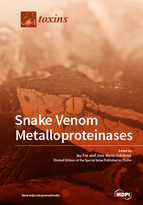Snake Venom Metalloproteinases
A special issue of Toxins (ISSN 2072-6651). This special issue belongs to the section "Animal Venoms".
Deadline for manuscript submissions: closed (31 August 2016) | Viewed by 117178
Special Issue Editors
Interests: snake venom metalloproteinases; SVMPs; ADAMs; disintegrins; pathophysiology/histology; hemorrhagic toxins; coagulopathy; disintegrin-like/cysteine-rich domains
Special Issues, Collections and Topics in MDPI journals
Interests: venom metalloproteinases and phospholipases A2; snake venom proteomics; mechanisms of tissue damage by snake venoms; preclinical efficacy of antivenoms; public health aspects of snakebites
Special Issue Information
Dear Colleagues,
This special edition of Toxins will cover recent developments in snake venom metalloproteinase structure, function and clinical implications. The special edition will include a historical retrospective of the discovery of SVMPs and early insights into their biochemical mechanisms and how they function in envenomation. The individual articles will review
- SVMP Structure
- Pathologies associated with SVMPs activities
- Mechanism of action; Evolution and orthologs
- SVMP processing and disintegrins
- Potential clinical applications of SVMP scaffolds
Prof. Dr. Jay Fox
Prof. Dr. José María Gutiérrez
Guest Editor








